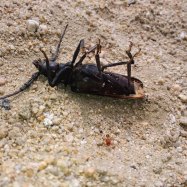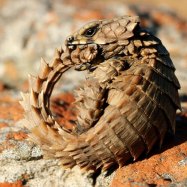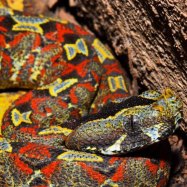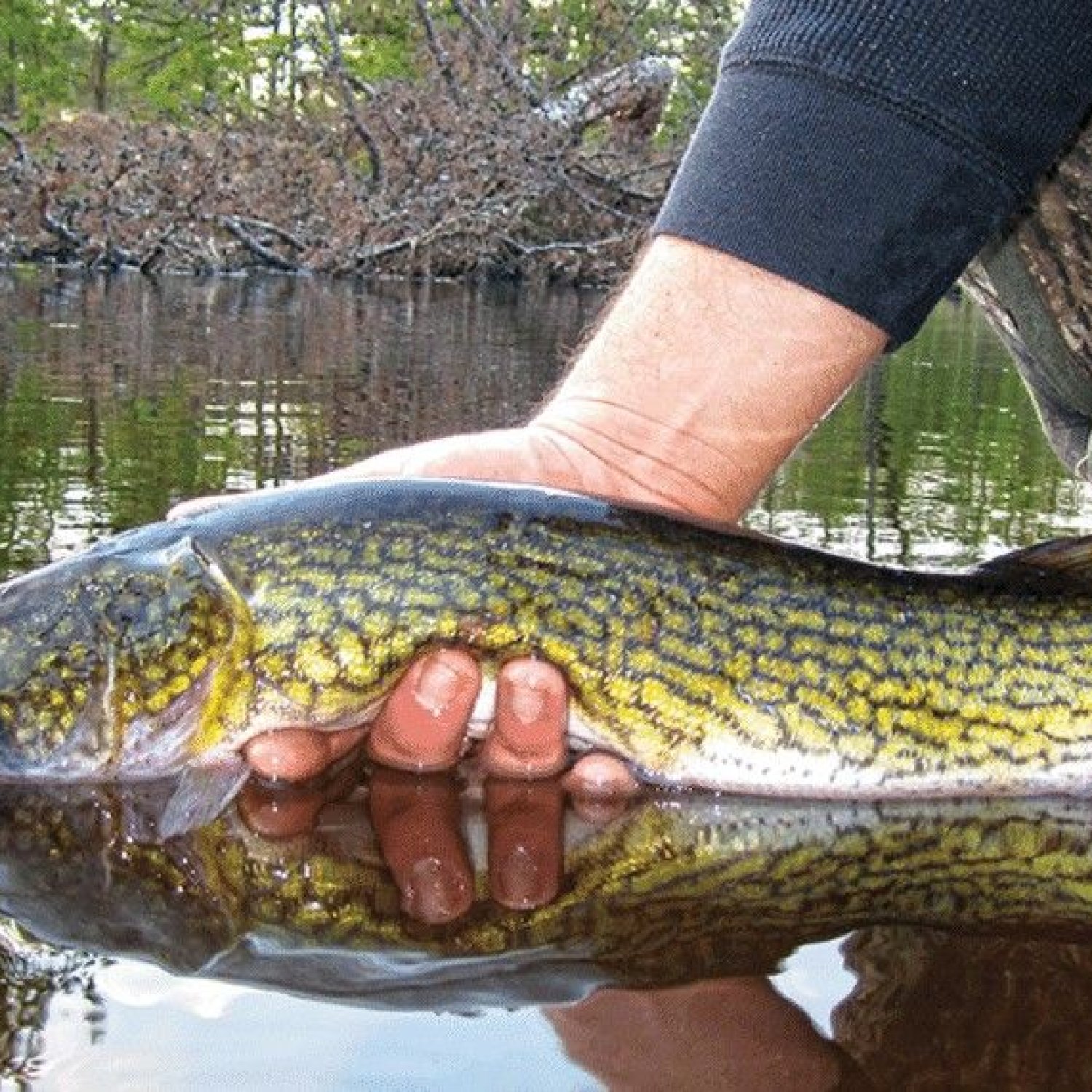
Chain Pickerel
Up to 24 inches (61 cm)
Learn about the fascinating Chain Pickerel, also known as the water wolf. This predatory fish can grow up to 24 inches long and is commonly found in rivers, streams, and lakes. Belonging to the Esocidae family, the Chain Pickerel has a sleek, elongated body shape designed for swift swimming and hunting. Keep an eye out for this impressive species on your next water adventure! #ChainPickerel #WaterWolf #PredatorFish
Animal Details Summary:
Common Name: Chain Pickerel
Kingdom: Animalia
Habitat: Freshwater
The Mighty Chain Pickerel: A Master Predator of Eastern North America
The Eastern North American waters are home to many incredible species, and one remarkable fish that has captured the attention of anglers and fishermen for centuries is the Chain Pickerel. With its sleek body, ferocious feeding methods, and unique appearance, this fish has earned a well-deserved spot as one of the most intriguing aquatic creatures in the region. In this article, we will delve deeper into the world of the Chain Pickerel and discover what makes it a true master predator in the freshwater ecosystem.The Basics: Identification and Taxonomy
Scientifically known as Esox niger, the Chain Pickerel belongs to the Animalia kingdom, the Chordata phylum, and the Actinopterygii class Chain Pickerel. Its taxonomic classification also includes the Esociformes order and the Esocidae family. This species is a relative of the renowned Northern Pike and Muskellunge, but it has some unique characteristics that set it apart.The Chain Pickerel is commonly known by its scientific name, but it also goes by other names such as Eastern Pickerel, Gunfish, and Federation Pickerel. Its name comes from the chain-like pattern on its sides, which resembles the military medals of a decorated soldier. This intriguing feature makes it easily distinguishable from other fish species, making it a popular catch among anglers.
Habitat and Distribution
The Chain Pickerel is found in the freshwater bodies of Eastern North America, specifically in the United States. Its distribution ranges from the Great Lakes down to Florida and from the Mississippi River to the Atlantic coast. It inhabits various bodies of water such as rivers, streams, and lakes, but it prefers areas with abundant vegetation and cover, such as weed beds and fallen logs.In the wild, the Chain Pickerel can be found in slow-moving or still waters, but it can also tolerate brackish water, making it adaptable to different environments Coati. However, it is most commonly found in clear, shallow freshwater bodies with a temperature range of 65-85°F.
Appearance and Physical Features
The Chain Pickerel has an elongated, torpedo-shaped body that is perfectly designed for its lifestyle as a predator. Its size can range from 11 to 24 inches (28-61 cm), with females being slightly larger than males. It has a single dorsal fin, which is located towards its back, and a rounded tail fin. Its dorsal and pelvic fins are highly flexible, allowing it to make quick and precise movements to capture its prey.As for coloration, the Chain Pickerel has an olive-green to dark brown back, with a white or cream-colored belly. Its most distinctive feature is the chain-like pattern that runs down its sides, which is made up of dark bars and spots. This pattern serves as camouflage, helping the fish blend into its surroundings and ambush its unsuspecting prey.
The Chain Pickerel also has a large, pointed mouth filled with sharp teeth, allowing it to deliver a swift and fatal attack to its prey.
Feeding Habits
Being a carnivorous species, the Chain Pickerel is a voracious predator, often referred to as the "freshwater barracuda." It is an ambush predator, lying in wait for its prey and using its quick bursts of speed to capture it. Its diet mainly consists of smaller fish, such as sunfish, shiners, and minnows, but it also feeds on insects, crustaceans, and small amphibians.Its powerful jaws and sharp teeth make it a formidable hunter, and it can consume prey up to its own body length. Its ferocious feeding methods have earned it a reputation as a fierce and aggressive fish, making it a prized catch for anglers.
Behavior and Reproduction
The Chain Pickerel is a solitary fish, often found alone or in small groups of similar-sized individuals. It is a territorial species, and during the breeding season, males will aggressively defend their territory and potential mates.The breeding season for the Chain Pickerel usually occurs in late winter or early spring when the water temperature reaches 50-55°F. During this time, the male builds a nest made of vegetation and defends it from other males while actively seeking female mates. After spawning, both male and female leave the nest, and the male takes care of the eggs until they hatch.
Conservation Status and Management
The Chain Pickerel is currently listed as Least Concern on the IUCN Red List, which means it is not facing any significant threats or population decline. However, like many fish species, its populations can be affected by habitat degradation, water pollution, and overfishing.In some areas, the Chain Pickerel is considered a nuisance due to its predatory nature and its impact on game fish populations. As a result, there are certain regulations and management strategies in place to maintain balance in freshwater ecosystems. Anglers are encouraged to follow catch-and-release practices, as well as adhere to size and bag limits, to ensure sustainable fishing.
The Fascinating World of the Chain Pickerel
The Chain Pickerel may be a common fish in Eastern North America, but its unique appearance, behavior, and adaptations make it a truly remarkable species. Its role as a top predator in freshwater ecosystems is crucial for maintaining balance and sustainability in these environments. As we continue to explore and learn more about the natural world, let us not forget to appreciate and respect the fascinating creatures that call it home.

Chain Pickerel
Animal Details Chain Pickerel - Scientific Name: Esox niger
- Category: Animals C
- Scientific Name: Esox niger
- Common Name: Chain Pickerel
- Kingdom: Animalia
- Phylum: Chordata
- Class: Actinopterygii
- Order: Esociformes
- Family: Esocidae
- Habitat: Freshwater
- Feeding Method: Carnivorous
- Geographical Distribution: Eastern North America
- Country of Origin: United States
- Location: Rivers, streams, and lakes
- Animal Coloration: Olive-green to dark brown with a chain-like pattern on its sides
- Body Shape: Streamlined and elongated
- Length: Up to 24 inches (61 cm)
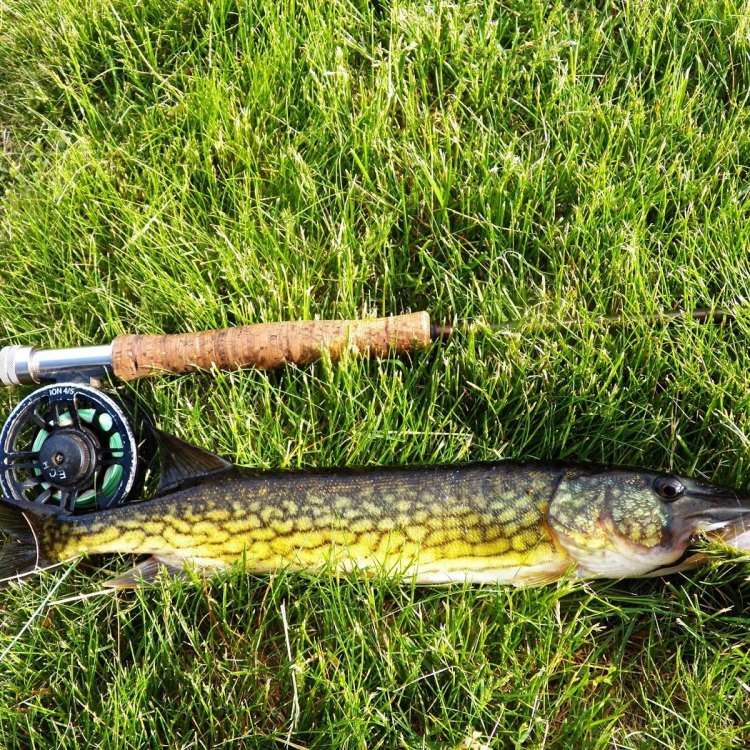
Chain Pickerel
- Adult Size: Up to 24 inches (61 cm)
- Average Lifespan: 5 to 8 years
- Reproduction: Sexual
- Reproductive Behavior: Spawning
- Sound or Call: No specific sound or call
- Migration Pattern: Migratory
- Social Groups: Solitary
- Behavior: Aggressive ambush predator
- Threats: Habitat degradation, overfishing
- Conservation Status: Least Concern
- Impact on Ecosystem: Maintains balance in freshwater ecosystems by controlling prey populations
- Human Use: Fishing (sport and food)
- Distinctive Features: Long, pointed snout and sharp teeth
- Interesting Facts: Chain Pickerel are known for their aggressive nature and voracious feeding habits.
- Predator: Bigger fish and birds
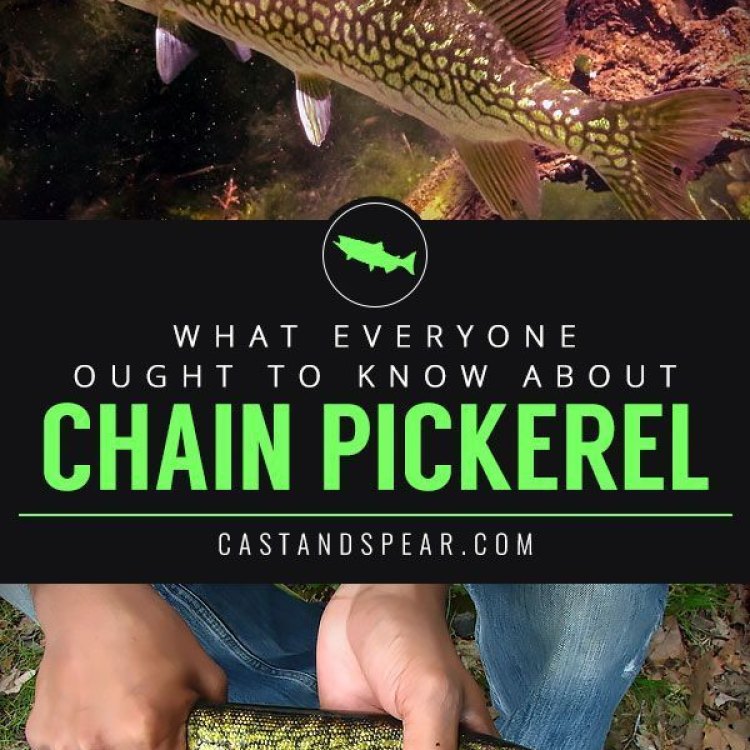
Esox niger
The Aggressive Ambush Predator: Exploring the Fascinating World of Chain Pickerel
When you think of freshwater fish, you may picture peaceful creatures, gliding through the water with ease. But in the world of the Chain Pickerel, aggression and ambush are the name of the game. With its distinctive features and unique behavior, the Chain Pickerel is a fascinating species that has captured the attention of fishermen and curious minds alike.Native to the eastern United States and Canada, the Chain Pickerel (Esox niger) belongs to the Esocidae family, which also includes Northern Pike and Muskie PeaceOfAnimals.Com. It is a long, slender, and torpedo-shaped fish that can grow up to 24 inches (61 cm) in length as an adult. Its body is covered in olive-green markings and a distinct chain-like pattern along its sides, giving it its common name.
But what makes this species stand out from its aquatic counterparts is its long, pointed snout, and sharp teeth. These features are tailored for its aggressive feeding habits and help it thrive as an ambush predator. As a voracious feeder, the Chain Pickerel is known for its ability to strike and swallow prey almost half its size in one swift motion.
Chain Pickerel are considered a game fish and are popular among anglers for their fighting spirit and as a table delicacy. However, as with most creatures in the natural world, there is much more to this species than meets the eye. In this article, we will explore the unique features, behavior, and impact of Chain Pickerel in their ecosystem.
Anatomy and Behavior
As an ambush predator, the Chain Pickerel is perfectly equipped to hunt and devour its prey Common Toad. Their pointed snout allows them to swiftly move through underwater vegetation and capture prey with their sharp teeth. These teeth are located in both their upper and lower jaws and are designed for grasping and holding onto their prey.Chain Pickerel have a lifespan of 5 to 8 years and reach sexual maturity at around two years old. However, their reproductive behavior is dependent on water temperature, and spawning typically occurs during the spring and early summer months. During this time, male Pickerel will build nests in shallow, weedy areas and attract females with their distinctive coloring and aggressive behavior. After spawning, the eggs will hatch within a week, and the fry will remain in the nest for a few more days until they start to swim and feed on their own.
Like their close relatives, Northern Pike and Muskie, the Chain Pickerel is known for its aggressive nature and will often strike at anything that moves, mistaking it for prey. Their ambush tactic allows them to hide and patiently wait for the perfect moment to attack, making them a formidable predator in their habitat.
Despite their aggressive behavior towards prey, Chain Pickerel are solitary creatures and do not form social groups. They prefer to live and hunt alone, only coming together during spawning season. However, they do have predators of their own, including larger fish and birds that prey on them.
Threats and Conservation
The Chain Pickerel is not considered an endangered species and is listed as "Least Concern" by the International Union for Conservation of Nature (IUCN). This is due to their relatively stable population and wide distribution throughout their range. However, this does not mean they are not at risk.The biggest threat to Chain Pickerel is habitat degradation. Due to human activity, their natural habitats, including freshwater bodies such as lakes and streams, are being destroyed or altered. This can lead to a decrease in prey and spawning areas, affecting their population. Additionally, overfishing can also pose a threat to their numbers, as they are popular among anglers.
To ensure the sustainability of Chain Pickerel, conservation efforts are being made to protect their habitats and manage their population. This includes implementing catch-and-release policies and regulating fishing quotas to prevent overfishing. It is also crucial to conserve and restore the habitats in which they thrive, allowing them to continue playing their vital role in the ecosystem.
Ecological Importance
Chain Pickerel may be known for their aggressive nature, but they also play an essential role in maintaining balance in freshwater ecosystems. As apex predators, they help control the populations of their prey, which includes smaller fish and aquatic invertebrates. By doing so, they prevent any one species from dominating their habitat, ultimately creating a healthy and diverse ecosystem.Their presence also influences the behavior of other species and can shape the structure of the food web. For example, the fear of being eaten by Chain Pickerel can cause smaller fish to alter their behavior, such as hiding in vegetation or avoiding certain areas. This, in turn, can impact the behavior and food choices of the species that those smaller fish would typically feed on, creating a ripple effect throughout the ecosystem.
Without the Chain Pickerel, the ecosystem could become imbalanced, leading to potential declines in certain species and an overabundance of others. This highlights the importance of preserving this species and its role in the natural world.
Human Use and Interesting Facts
As mentioned earlier, Chain Pickerel are popular among anglers for their aggressive behavior and as a food source. They are known for their strong fight and are a favorite target for sport fishing. In terms of their culinary use, they are often compared to their closely related species, Northern Pike, for their white, flaky meat.But there are also interesting facts about Chain Pickerel that may surprise you. For instance, they are known for their ability to survive in water with low oxygen levels, thanks to their specialized air bladder that allows them to breathe atmospheric air. This is why they are sometimes found in shallow, stagnant water bodies.
Chain Pickerel also have an impressive camouflage ability, using their long, slender bodies and chain-like pattern to blend into their surroundings and ambush their prey. And while they do not make any specific sound or call, they produce a rumble-like vibration when feeling threatened, which can be heard by nearby fish.
An Unforgettable Encounter
To truly appreciate the unique features and behavior of the Chain Pickerel, one must experience seeing them in their natural habitat. I was fortunate enough to have such an encounter while canoeing on a quiet lake in eastern Canada.As I paddled along the shoreline, admiring the scenic views and peacefulness of the environment, I suddenly heard a loud splash and saw a flash of green. Curious, I swiftly turned my canoe to see what had caused the commotion. To my amazement, I saw a large Chain Pickerel had emerged from the water, suspended in mid-air, with its sharp teeth clamped onto a small fish.
I watched in awe as the Pickerel thrashed and twisted in an attempt to swallow its prey whole. Despite its best efforts, the fish was too big, and the Pickerel eventually gave up and swam away, leaving a trail of disturbance behind it. This experience left me in awe of the power and adaptability of this magnificent species.
In Conclusion
From their distinct features to their aggressive behavior, the Chain Pickerel is a fascinating species that has a significant impact on its ecosystem. Despite facing threats from habitat degradation and overfishing, they continue to thrive in their natural habitats, playing a vital role in maintaining balance and diversity.As we learn more about this species and the important role they play, it is crucial to continue conservation efforts and educate others on the importance of preserving their habitats. So next time you see a Chain Pickerel, whether while fishing or out enjoying nature, take a moment to appreciate the unique and essential role they play in the freshwater ecosystem.
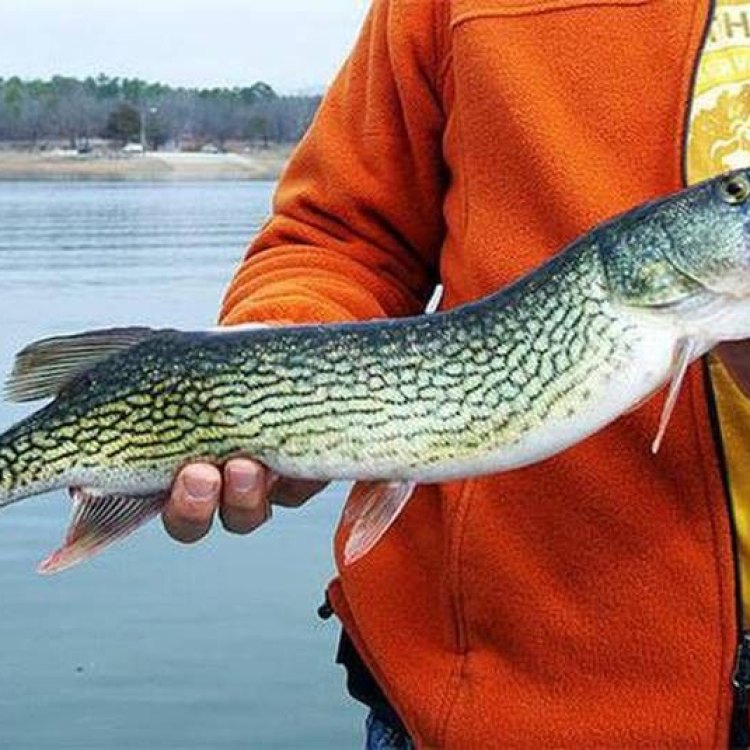
The Mighty Chain Pickerel: A Master Predator of Eastern North America
Disclaimer: The content provided is for informational purposes only. We cannot guarantee the accuracy of the information on this page 100%. All information provided here may change without prior notice.



